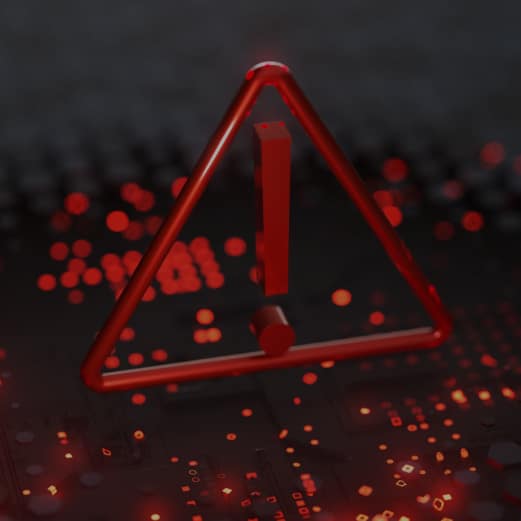Threat modeling is a powerful strategy for pinpointing your organization’s cybersecurity risks and possible attacks, helping protect your IT environment, and offering solutions for different scenarios. In particular, the TRIKE model is an open-source threat modeling methodology that helps organizations identify and prioritize potential security risks and vulnerabilities and develop strategies to mitigate or manage them.
But what is the TRIKE threat model, exactly, and what are the benefits of TRIKE threat modeling? This article dives deep into threat modeling, the TRIKE threat model, and its advantages.
The Five Stages of Threat Modeling
Threat modeling should be a part of the IT strategy of any security-conscious organization. By performing risk management and mapping the relationships between different assets and systems, threat modeling helps businesses seize control of their IT environment.
Threat modeling is generally divided into five stages:
- Identifying assets and defining requirements: First, companies evaluate the importance and priorities of their IT assets. Just like you might protect certain personal possessions in a safe or behind a lock and key, organizations need to determine which of their IT assets require greater protection. In this stage, businesses also decide which user roles should be able to access critical assets.
- Creating diagrams: Next, organizations build abstractions of their IT environment, helping visualize the attack surface that needs to be protected. These diagrams might depict the major components of an IT system, the relationships and interactions between them, and even the user roles that have access to them.
- Identifying threats and risks: Companies should identify the IT threats and risks they face and the attackers who might be responsible. Potential attack methods include infiltrating networks, exploiting insider threats and software vulnerabilities, and even using physical attacks to hack into hardware. Then, organizations should develop policies to bolster security and decrease the likelihood of an attack (such as tightening access control, strengthening passwords, and employee training programs)
- Mitigating threats: Once a plan of action has been created, the fourth stage of threat modeling involves executing that plan and mitigating security threats. Threat modeling provides a list of priorities, enabling organizations to triage their IT security issues by first addressing the most critical risks and vulnerabilities.
- Validating the model: Finally, businesses can assess the effectiveness of their threat modeling efforts with frameworks such as the Common Vulnerability Scoring System (First, 2019). Organizations should revise their threat modeling approach regularly as the cyberthreat landscape evolves, dealing with new risks as they arise.
TRIKE Model Explained
Cybersecurity threats have surged in recent years pushing businesses to revamp their security policies and techniques to safeguard organizational data.
To understand how to best deploy these technologies, however, organizations need threat modeling techniques such as TRIKE. The TRIKE model is a conceptual framework for auditing IT security through the lens of risk management (Trike, 2008). First created by security developers Brenda Larcom and Eleanor Saitta, the TRIKE model is open source, allowing anyone interested in cybersecurity to contribute to the project.
The TRIKE model is just one of the possible threat models that businesses can use, many of them with snappy acronyms such as STRIDE, VAST, PASTA, and OCTAVE. What sets the TRIKE model apart from these threat models is that it combines two different models.
First, the requirements model offers a conceptual framework for threat modeling, allowing different security teams and stakeholders to coordinate their work. This model describes an IT system’s security features and characteristics and determines the acceptable level of risk that each asset can face.
This step involves the creation of an actor-asset-action matrix, defining which actors (users) can perform which actions on which IT assets. The set of allowed or disallowed actions contains four possibilities: creating, reading, updating, and deleting (also known as CRUD). Users can be allowed to perform each of these four actions, disallowed, or allowed with certain rules and restrictions.
The second component of the TRIKE model is the implementation model. This involves using data flow diagrams (DFDs), which depict how information is stored, moved, and changed throughout an IT system. By mapping data flows, threat intelligence experts can discover two types of potential threats in the system: privilege escalation and denial of service. Each possible threat is evaluated on a five-point scale, with a lower number representing a higher risk.
What are the Benefits of the TRIKE Model?
The TRIKE model comes with several benefits.
- For one, the TRIKE model offers a structured approach, systematizing the process of identifying and prioritizing potential security threats. As a result, organizations can focus their efforts on the most critical issues and vulnerabilities.
- Another advantage of the TRIKE model is the in-depth analysis that it performs. Combining zero in on a particular vulnerability or zooms out to see the big picture, depending on their needs. By combining the requirements and implementation models, the TRIKE model gives businesses a complete picture of their IT environment.
Like any threat model, the TRIKE model has pros and cons. For example, the TRIKE model requires users to map all their IT assets and users in detail, which may be too complex for organizations with complex IT environments. Larger enterprises may wish to use one of the alternate threat modeling methodologies discussed above, such as STRIDE, VAST, PASTA, or OCTAVE.
Why Become a Certified Threat Intelligence Analyst?
Threat modeling is an excellent strategy for evaluating the security of IT systems and performing cyber risk management, prioritizing different assets and vulnerabilities. After mapping your IT environment using methodologies such as the TRIKE model, you should revise it regularly to account for new changes and potential hazards.
Businesses need skilled and experienced threat intelligence analysts who can perform threat modeling and other IT security tasks. If you’re interested in a career in threat modeling, it’s an excellent idea to bolster your credentials with a threat intelligence certification.
EC-Council’s Certified Threat Intelligence Analyst (C|TIA) certification has been designed and developed with cybersecurity and threat intelligence experts. The C|TIA program equips you with the latest techniques and tools to detect, engage, and neutralize cyberattacks in real time. offering an in-depth look at each part of the threat modeling life cycle and the available defense mechanisms. The program also employs a rigorous Job Task Analysis (JTA) of the job roles involved in the field of threat intelligence, which makes it an ideal choice for a threat intelligence certification.
Learn more about threat modeling and jumpstart your career in threat intelligence.
References
First. (2019, June). Common Vulnerability Scoring System v3.1: User Guide. https://www.first.org/cvss/user-guide
Gartner. (2021, September 13). Gartner Survey Reveals Talent Shortages as Biggest Barrier to Emerging Technologies Adoption. https://www.gartner.com/en/newsroom/press-releases/2021-09-13-gartner-survey-reveals-talent-shortages-as-biggest-barrier-to-emerging-technologies-adoption
Trike. (2008). Trike | octotrike.org. http://www.octotrike.org/.
About the Author
David Tidmarsh is a programmer and writer. He has worked as a software developer at MIT, holds a BA in history from Yale, and is currently a graduate student in computer science at UT Austin.










